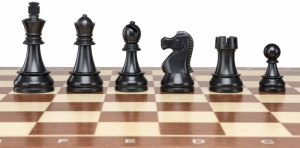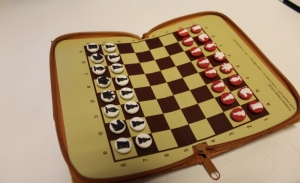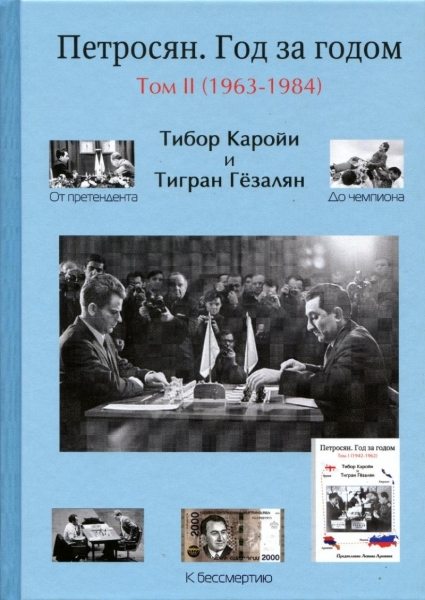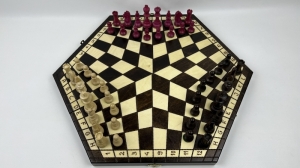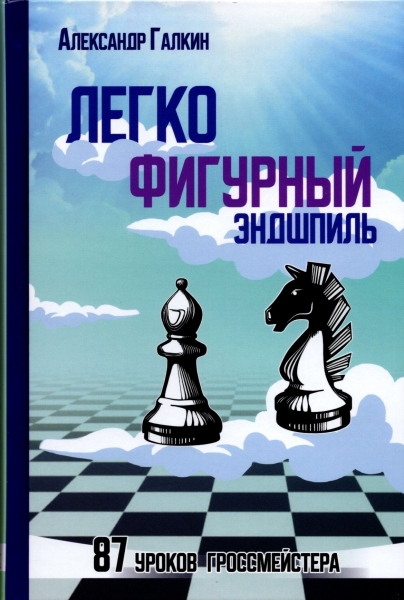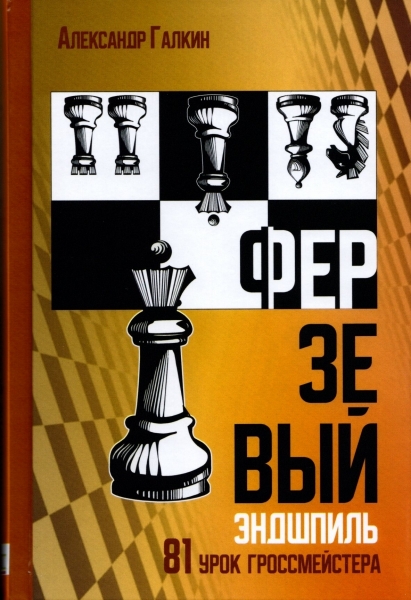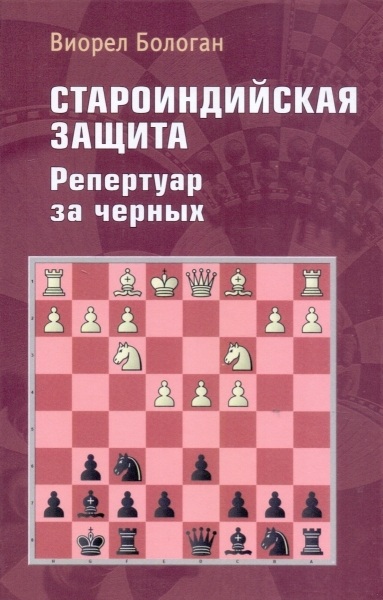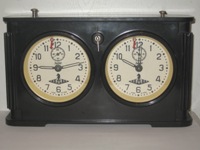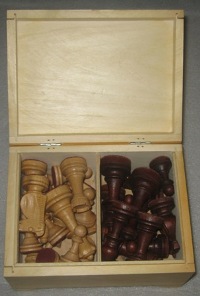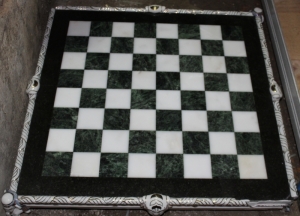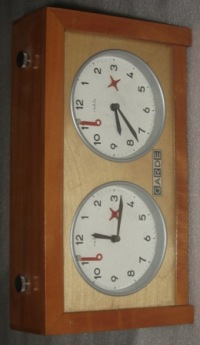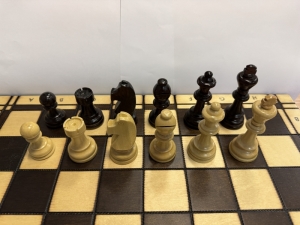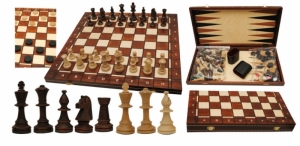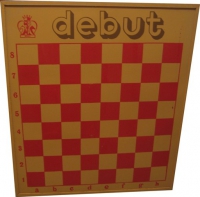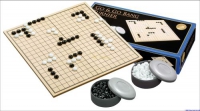INVENTORY
-
413.80 $
Chessboard china, serpentine, marble. The size of the board is 65x65 cm. & nbsp;
-
401.38 $
Of valuable wood. King height - 95 mm. The most convenient for practical games! & Nbsp;
-
314.06 $
Wooden mechanical watch. The country of manufacture is Germany. Garde is considered the number 1 brand in the world by mechanical chess clock.
-
293.65 $
Made in Germany. Installation of any time controls, including Fischer and Bronstein controls (with the addition of time). FIDE control setting. The cost is indicated when buying in Moscow. Specify the cost of shipping when ordering.
-
293.33 $
Size: 48x24x6 cm Material:: Wood Height of the king - 9.5 cm Pawn height 5.2 cm The diameter of the base of the king is 3.5 cm The diameter of the pawn base is 3 cm ART P10
-
289.66 $
Staunton's game set consists of chess, checkers and backgammon. Board 480 mm to 470 mm. King height 90 mm.
-
213.05 $
Wall-mounted metal demonstration non-folding board with flat magnetized pieces in the kit (queen and pawn are additionally attached). Board cells are light cream and brown. The size of the cage is 80x80 mm. It will not be sent by mail!
-
207.29 $
Large gift set (weight about 3.5 kg!). Legends reflected in ancient Chinese chronicles attribute the appearance of go to the third or beginning of the second millennium BC, attributing its creation to one of the legendary Chinese emperors or their closest courtiers. Objective historical evidence suggests that the game definitely existed and was quite common 2500 years ago - these were the first references to go in documents. The first material evidence (archeologists found planks and stones for go) and reliable records of games played date back to the first centuries of our era. In the 7th century, go to Japan, where, starting from the 15th century, it experienced a tremendous rise. In the 20th century, previously cultivated only in Asia, it became known and gradually spread to Europe and America. To date, most European countries, including Russia, have their own go federations.
-
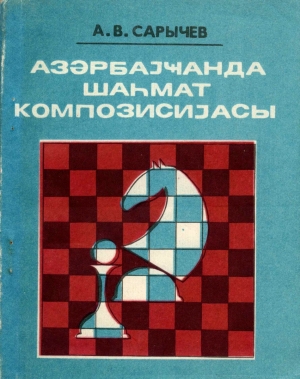 Chess composition in Azerbaijan / Азəрбаjҹанда шаhмат композисиjасы
Author:
Chess composition in Azerbaijan / Азəрбаjҹанда шаhмат композисиjасы
Author:
Sarichev 62.50 $ -
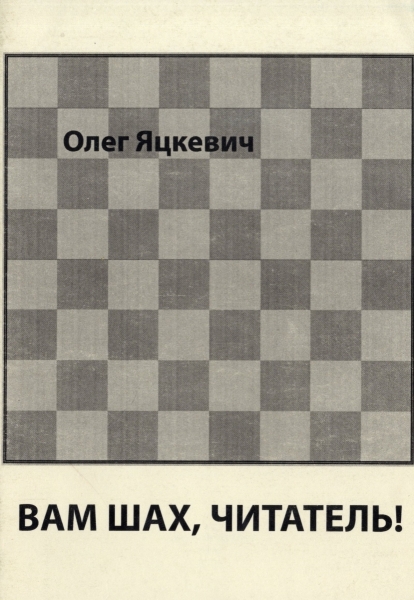 Check it out for you, reader
Author:
Check it out for you, reader
Author:
Yatskevich 15.00 $ -
 Notebook of the chess player of the Russian Chess Federation
4.25 $
Notebook of the chess player of the Russian Chess Federation
4.25 $
-
 Lessons of Mastery. Second edition, revised
Author:
Lessons of Mastery. Second edition, revised
Author:
Dvoretsky 18.75 $ -
 Alexandra Goryachkina: On the way to the chess Olympus
Author:
Alexandra Goryachkina: On the way to the chess Olympus
Author:
Kryakvin 18.75 $ -
 Complete Encyclopedia of Health by Dr. Zalmanov
Author:
Complete Encyclopedia of Health by Dr. Zalmanov
Author:
Zalmanov 16.00 $ -
 Invitation Fide candidates tournament 2020
92.50 $
Invitation Fide candidates tournament 2020
92.50 $
-
 64 chess review No. 1,2,3,4,5,6,7,8,9,10,11,12 for 2024 (Price per issue)
5.00 $
64 chess review No. 1,2,3,4,5,6,7,8,9,10,11,12 for 2024 (Price per issue)
5.00 $
-
 Antique pre-revolutionary wooden chess
187.50 $
Antique pre-revolutionary wooden chess
187.50 $
-
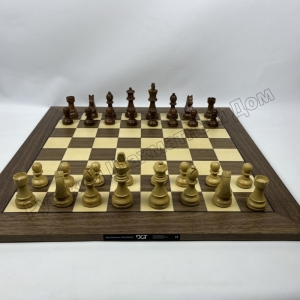 DGT Timeless Wooden weighted Chess Set Handcrafted with Non-Folding Board
600.00 $
DGT Timeless Wooden weighted Chess Set Handcrafted with Non-Folding Board
600.00 $
 Русский
Русский  Английский
Английский 